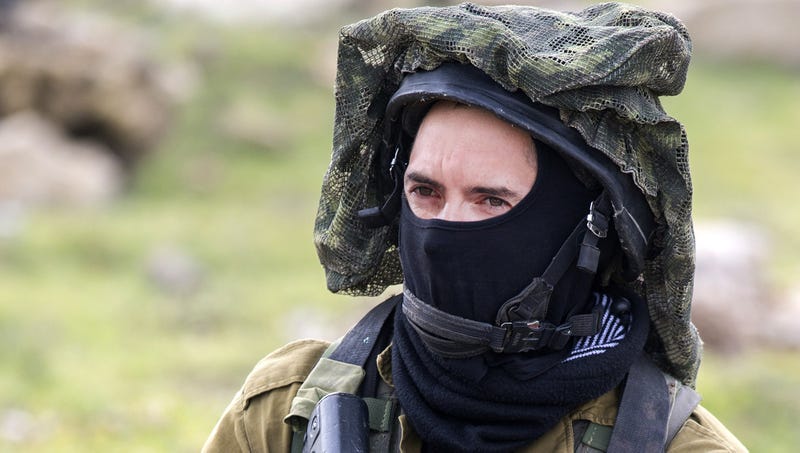At least that seems to be the subliminal message in this New York Times article about ‘the most exciting person in (Irish) politics today’, by the interestingly named Shawn McCreesh:
A Woman Takes on Ireland’s Old Boy’s Club
By Shawn McCreesh
Mr. McCreesh is an editorial assistant for the Opinion section.

DUBLIN, Ireland — On a misty Monday morning in the city’s north end, I am sipping coffee — not the Irish kind — with Mary Lou McDonald, the new president of Sinn Fein and the most exciting person in politics here today. At 5 foot 4, this fast-talking, 49-year-old mother of two is barely a few months into the job and is already being whispered about as the possible first female prime minister of Ireland.
“How great would that be?” she asked, with a laugh. “Well, why not?”
While Britain was busy this week celebrating a fairy-tale princess, Ireland was plunged into two painful and bruising debates about women’s health issues and Ms. McDonald was in the rings of fire, arguing, ahead of Friday’s referendum on abortion, that “the old boys’ club that runs this state” had betrayed the women of Ireland with its draconian policy, and in an ongoing scandal about a government cover-up on botched cervical cancer tests.
With her appointment she’s also joined a new girls club that’s faced with tackling another wildly contentious issue — Northern Ireland in the age of Brexit. In addition to herself, Ms. McDonald will work with a cast of all women to hammer out a new deal. They include Theresa May; Arlene Foster, the head of the Democratic Unionist Party; Karen Bradley, the secretary of state for Northern Ireland; and Michelle O’Neill, who is Ms. McDonald’s deputy.
She mused that, “maybe this is a test for women in politics.”
In February, Ms. McDonald’s mentor, Gerry Adams, passed the torch after 34 years, anointing her the new boss of Ireland’s oldest political party and one that, for much of its existence, has been thought of simply as the I.R.A. in a suit.
These are turbulent times for any new leader to step into the fray. Fears abound that the old sectarian conflict could reignite, since Brexit has thrown a monkey wrench into the fragile power-sharing mechanism that keeps Northern Ireland chugging along. The country is bitterly divided over the abortion issue, a procedure outlawed now even in cases of rape and incest. A surge of immigration and a widening inequality gap threaten to crack Ireland’s perceived invincibility to the alarming wave of far-right nationalism crashing on the shores of so many of its neighbors.
And the demise of the once all-powerful Catholic church here has changed the landscape in ways still not fully understood. In some ways, Ireland has grown more European and modern; it passed same-sex marriage easily three years ago and didn’t blink at a gay, half-Indian Prime minister. But in Ireland, as they say, the past is never the past, and the undertow is strong. Ms. McDonald is determined to keep Ireland from falling backward, especially for women.
Amid this identity crisis, Sinn Fein, once on the fringe, rises like a phoenix from the peat bog, gobbling up seats in Parliament and swelling its ranks with new voters. The party of the working class is now Ireland’s third largest. It is the most socially progressive and advocates for wealth redistribution — so badly needed here in the post-Celtic Tiger era. This, while the other parties, continually choked in corruption scandals, have contributed to a feeling of malaise that has set in among an increasingly apathetic electorate.
But if Sinn Fein wants a shot at legitimacy it will need to shed its militaristic image while also remaining true to the gray-flecked beards in the North who make up the bedrock of the party. It is believed that this mom from the south, who majored in English literature, named her daughter Iseult after the daughter of Maud Gonne, Yeats’s muse, can do it.
“Sinn Fein is a changed and changing party,” she says. “I understand it’s a gear shift for people to appreciate that the party is changing but that’s the truth, so the only thing I can say to people is bear with me.”

A relative of mine who lives in the North once had a gun put to his head by Sinn Fein. It rattled him enough that he said he would never become “a Shinner,” as Sinn Fein voters are called, sometimes pejoratively. I ask Ms. McDonald what she would say to a person — and there are many — who’d been caught in the crossfire of Belfast confetti before but who now, with the departure of Gerry Adams at the helm, may be up for grabs in elections.
“I’m not on a mission to convince anybody to forget,” she insists. “In Ireland, the whole issue of remembering, and memory, is associated for very obvious reasons with a negative impulse because people suffered across the board, including at the hands of the I.R.A. — I recognize and say that very clearly — and at the hands of the British state, and Loyalist death squads, and so on.
“But remembrance is also a positive thing,” she says, brightly.
Ms. McDonald grew up less than a hundred miles from the armed struggle, which saw more than 3,500 people killed between 1969 and 1998, in a middle class home in a tony section of south Dublin. Unlike many of her Sinn Fein colleagues, and to her political benefit, she lacks what the Irish call “the smell of cordite.” Still, she says the violence shaped her.
She hails from a staunchly Republican family and says her grandmother, Molly, whose brother was executed in an earlier struggle for independence, hugely influenced her. “She used to look up the road to the North and she had a real sense of connection with what was going on up there.
“I remember the morning the news came down that Bobby Sands died. I remember the hunger strikes,” but, she said, growing up in the South, “you didn’t have the British army on the streets.”
Among those who did, some view the lack of blood on Mary Lou’s hands as a lack of credentials.
“You see, you get it from both ends,” she says. “On the one hand, you’re criticized for being too Republican, and then you’re criticized for not being Republican enough.”
Others wonder what business a private-school educated girl from a well-to-do neighborhood has as the head of the party that champions the working class.
“I represent probably the most working-class constituency and district in the country,” she says, referring to her Dublin constituency, where we are today. “I love the working class, and I don’t mean that in a patronizing way. I’m proud to represent them. I’m really proud that they trust me.”
They trust her, sure, but can a Dubliner be trusted to lead the party of the North?
“Some people speculated when I came into position that this woman is from the South, so therefore the North will be forgotten. Far from it.”
Joking, she adds: “I don’t care if they hate the Dubs. That’s ’cause we’re great at football.”
But trying to be everything to everyone is a game so many politicians lose, and to her credit, not one she is playing. “The truth is, there’s no one way to look or be or sound, there’s no particular background to be an Irish republican,” she says. “There used to be a thing that the assumption is Irish Republicans were male, with beards, and black leather jackets. We are now a hugely feminized, feminine movement.”
Indeed, the hard-charging Mary Lou has fast become something of a feminist icon in the Emerald Isle. There isn’t another lawmaker more closely allied with the movement to legalize abortion. Her face is the lone politicians beaming down from pro-choice posters adorning lamp posts from here to Galway. Where other parties’ support for the “Yes” vote has been mixed, Mary Lou has cracked the whip on Sinn Fein, threatening suspension for any of her troops that fall out of line. On a primetime debate about abortion last week, she took the stage and deftly parried her opponents.
Rising to the top of a legislative body that had to impose a gender quota just to ensure minimal female representation has not been easy. “The very male atmosphere is something you kind of have to steel yourself to,” she allows. “You get used to it, actually, and sometimes that’s not a good thing.
“Even just the fact of being a woman makes you kind of noteworthy in the political firmament, still. We’ve got a lot of ground to make up. But ‘Poor us’ doesn’t get us anywhere. It has to be Strong us. Entitled us. Able us. Smart us. Determined us.” (At the abortion debate last week, she said to the audience that it was time to “woman up.”)
Ms. McDonald had an eye-opening experience when she learned, at one of her first jobs out of college, as a consultant, that she was being paid less than male colleagues.
“I remember the precise moment when I discovered it,” she says. “And this is a different thing than being harassed, but there’s something degrading about suggesting that you don’t carry the same worth in terms of your work.”
Now, with the woman known only by her first name in the driver’s seat, she has a chance to broker a new phase of peace in the North with her fellow female adversaries and allies.
“There’s an opportunity here for us to demonstrate that we can actually think outside the box and do things differently and actually challenge a paradigm of politics, particularly in the North where it’s ‘I win, you lose,’” says Ms. McDonald. “That, to me, is a very kind of old school, unhealthy, and dare I say it — a very male — model of politics.”
Still, it won’t be easy. Theresa May has only been able to cling to power at 10 Downing Street thanks to a razor-thin margin afforded to her by a few D.U.P. seats in the Northern Ireland, and talks between the D.U.P. and Sinn Fein have collapsed. Brexit has raised the specter of a hard border again.
“Brexit’s a disaster, to put simply,” Ms. McDonald says. “The European project is far from perfect, it needs a serious rebooting. But we are Europeans. The idea of getting cut off in some kind of insular, splendid isolation is not an Irish thing. That’s not how we roll.”
I ask if her North Star, Gerry Adams, had any advice for her as she settled in to her new gig.
“Keep your Sundays.”
Shawn McCreesh is an editorial assistant for the Opinion section.
Follow The New York Times Opinion section on Facebook and Twitter (@NYTopinion), and sign up for the Opinion Today newsletter.













You must be logged in to post a comment.